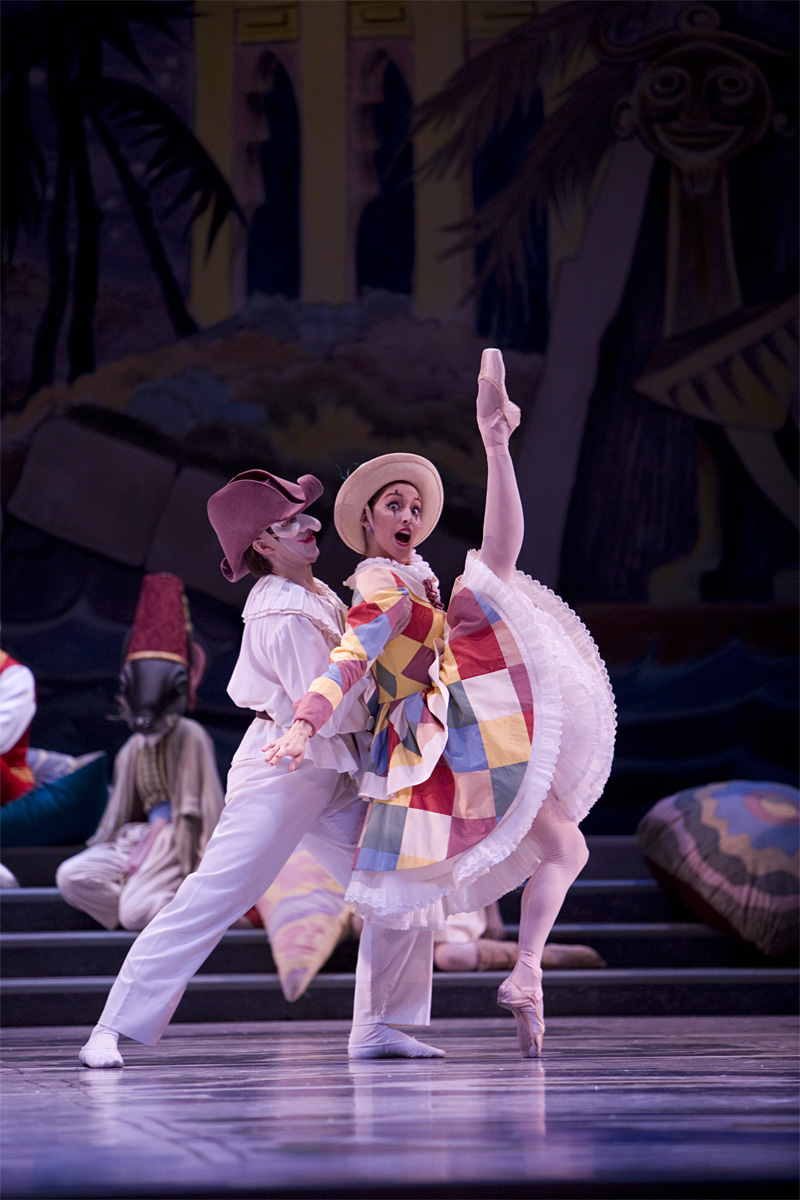The most remarkable aspect of Maurice Sendak’s Where the Wild Things Are is that it captures perfectly a childlike perspective of the world (a goal of this year’s film adaptation, too). Short on words, the 1963 book is filled with Sendak’s classic illustrations of oversized monsters, bedrooms turning into boats, and a small boy becoming a king. It presents a child’s fantasy of running away from home to a place where he’s in charge, only to realize he’s better off with his family. The resolution is simple and satisfying.
It’s fitting that Sendak’s name is synonymous with Pacific Northwest Ballet’s annual production of Nutcracker. The version that he beautifully crafted with choreographer Kent Stowell 26 years ago is another narrative of childhood fears and fantasy—and like Wild Things, it’s very much about a child’s perspective. For one thing, the narrative is streamlined compared to the original 1816 E.T.A. Hoffmann tale, which includes a complex back story of a cursed prince and a sugar-plum fairy. Instead, it’s the dream of a German girl named Clara, who receives a nutcracker doll as a Christmas gift from her creepy godfather Herr Drosselmeier. When she falls asleep on Christmas Eve, she dreams of a battle between mice and toys, and of becoming an adult woman who meets a nutcracker prince.
Clara’s emotions are magnified, the way a small child might feel them. Her godfather is exaggerated—he has a black eyepatch and uses dolls to act out terrifying stories. Guest artist Uko Gorter artfully embodies this oddness, as Drosselmeier and later as the Pasha, with larger-than-life kicks and leaps that are both lumbering and graceful. The first time the mice appear onstage, they are played by children. As the ballet shifts into fantasy, Sendak’s intricate and colorful sets come alive: A Christmas tree triples in size in a matter of seconds, while a giant, grotesque mouse takes over the stage.
Even though Clara becomes a grown woman in a flash, the dancer—Kaori Nakamura at last Friday’s performance—remains airy and delicate in her movement. Her dances with the Prince are emotionally intimate but without a hint of sexuality. When Friday’s Prince, Jonathan Porretta, lifted Nakamura effortlessly into the air, it was both flawless and completely innocent, the way a young girl imagines falling in love.
Not everything feels quite so flawless. The dance of the snowflakes—so technically exquisite that the ballerinas’ feet are practically silent as they leap across the stage—is too long and distracts from what little plot Nutcracker has. (The ballet’s second act is mostly performances stacked on top of each other, with little narrative or tension. No conflict exists for Clara to solve in her dream-world; she’s just there to see people dance.) And there are predictable stereotypes throughout Nutcracker: Evil characters are always foreign and dressed in Middle Eastern garb, and the dancing dervishes’ costumes in Act 2 include race-bending skin-colored shirts and Afro wigs. But there’s a pure sense of color-blindness, too. The two dancers who played Clara on December 4 were of different races: Lindsey Pool, the young Clara, is African American; Nakamura, Clara in her adult dream-state, is Japanese.
These are the risks of any story that identifies with a child’s perspective. Children aren’t as concerned as adults are with differentiating fantasy from reality. Sometimes, stereotypes are inflated and snowflakes become dancing women for no reason. Most likely, children won’t notice these inequities at all—perhaps clashing cultures and deficient plots are things only adults think about, while children are too busy dreaming of magical lands where they can be kings and queens.







